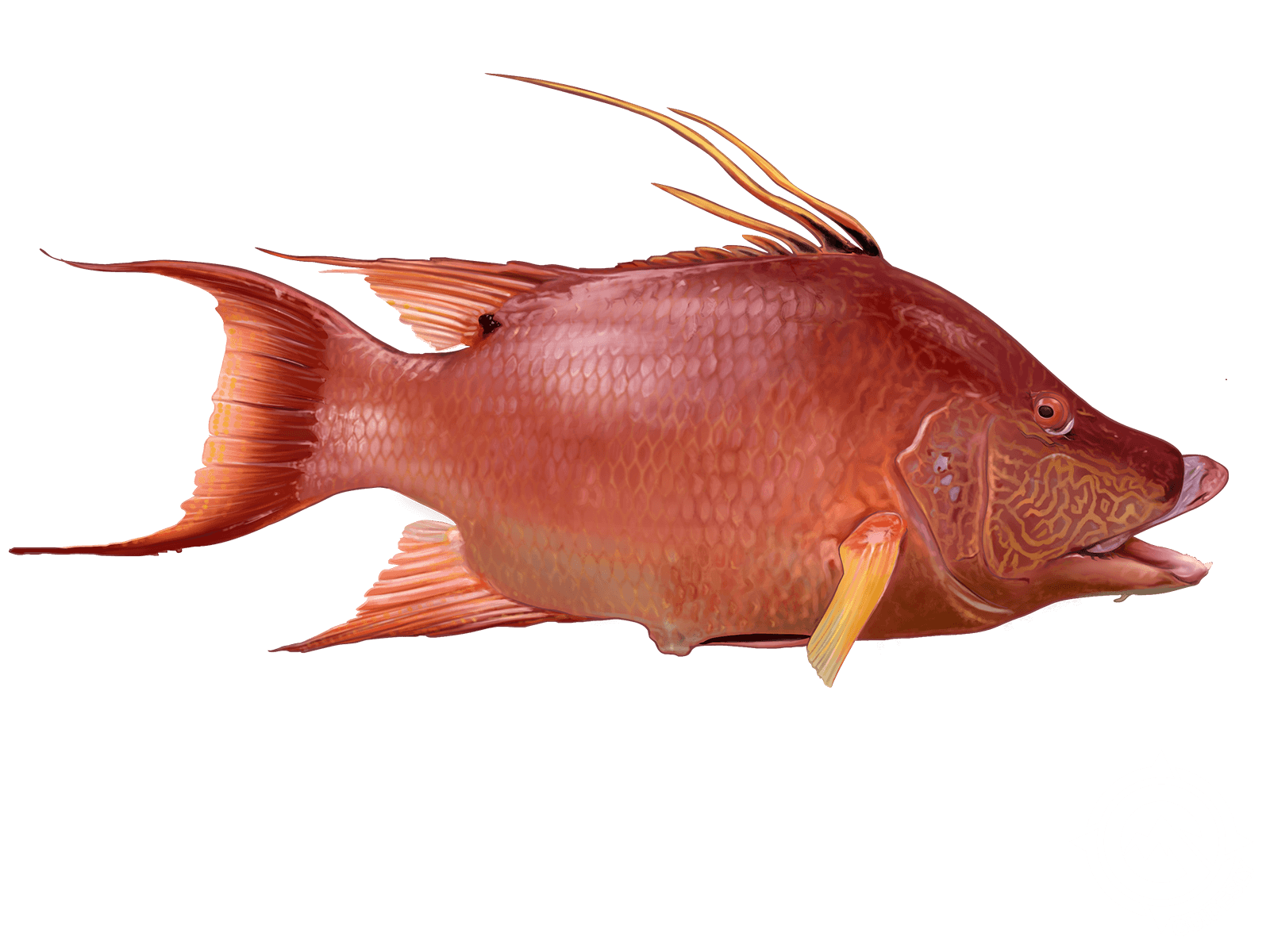Hogfish

Species Details
Lachnolaimus Maximus
Labridae
Perciformes
Onshore, Nearshore, Offshore, Reef, Wreck
8 - 24 lbs.
10" - 36"
Hogfish
The Hogfish or the Lachnolaimus maximus, a type of Wrasse, is given its name due to its snout looking very similar to that of a pig. Its fins have spines that look similar to that of a lion fish but have a brighter orange color. Though, its color highly depends on the habitat. The Hogfish often uses its snout to dig through the reefs and sand to find crustaceans. Unlike the Lionfish however that has multiple spines, the Hogfish has three to four primary long dorsal spines with a series of shorter ones.
To tell the difference between a male and female Hogfish, look for the black spot. Males are the only one that have a black spot behind the pectoral fins.
The Hogfish may also be known as a Hogsnapper.
Hogfish Diet
The Hogfish is a carnivore. Its hog-like snout allows it to dig through the and much like a hog would when looking food. As the Hogfish digs, it devours smaller crustaceans and mollusks. But it also devours small crabs and sea urchins.
Hogfish Size
An adult Hogfish can reach the maximum length of 3 feet (0.91 m) and weigh as heavy as 22 lbs (10 kg). Unfortunately, this fish can only live for approximately 11 years.
Interesting Facts about the Hogfish
- Hogfish are hermaphroditic. They change gender once they reach a certain maturity which is somewhat decided by their length.
- Male Hogfish are more brightly colored than female Hogfish.
- Hogfish live in schools. They usually live with one dominant male Hogfish and several other females. This however can change if the female reaches a certain size and has a chance to turn male.
- A female Hogfish usually fully matures after 3 years in which it has a chance to become male.
- Hogfish are equipped with canines that are meant for shredding shellfish and crustaceans.
- Juvenile Hogfish focus more on eating mollusks and echinoderms.
- Hogfish are bullies. They tend to be aggressive to smaller fish.
- Hogfish are quite popular as food. Hogfish taste mild with sweet undertones. Though, some argue that the Hogfish taste sweeter than a Grouper.
Hogfish – Fishing Techniques: How to Fish for a Hogfish
One cannot simply use a hook and line to catch a Hogfish.
Due to their snout, this makes catching a Hogfish with your typical hook and line difficult. More experienced anglers say that the best way to start catching a Hogfish is through spearfishing. That means, going out to the reef with a spear in hand and start stabbing the water to catch them. However, having a good rig is also a good way to start catching them.
When fishing for a Hogfish, it takes a good sense of reflexes to catch them. They are known to be fast strikers.
Next, there are several spots to pick when fishing for a Hogfish. They like rocky and structured areas due to the presence of more shellfish and crustaceans. One kind of structure to look for is a Hardbottom. There are small cracks and live corals that they like to loiter around in. Check also the vegetation in the area especially ones on tops of large rocks and roll offs. If there are none there, you can also check ledges that have at least 1-5 feet of relief.
Once you found the area, then, there’s looking at the Hogfish’s behavior. The Hogfish tend to be curious creatures and are known also to swim next to divers. They also love noise. There have been reports that causing more sound vibrations in the water will attract them closer to you, probably thinking that you have food.
Hogfish prefer live bait. Go for either mud crab or live shrimp. The struggling of the shrimp will most likely make sounds which will attract the Hogfish towards you.
Hogfish Habitat
Hogfish commonly stay in open bottoms or coral reefs. Their preference for depth may range from 10-100 feet (3 – 30 meters). They like loitering around the edge of the reef and form small schools. The Hogfish often congregate near places with hard sand and rock bottoms to find smaller fish.






